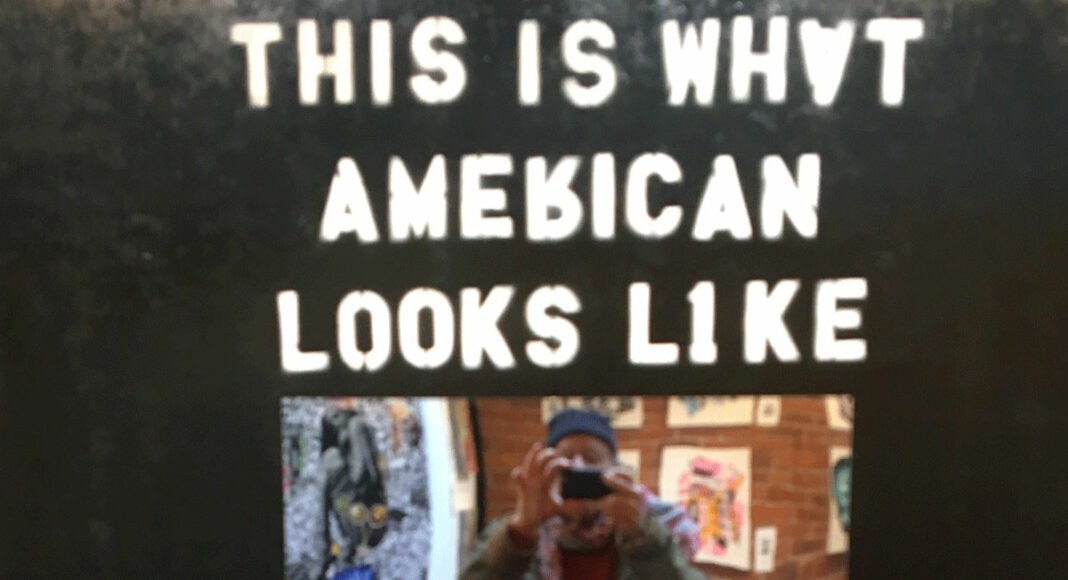Rodney Toy’s Vibrant Response to Anti-Asian Racism
The Chinese New Year and the arrival of the Year of the Tiger are just around the corner. Festivities begin on January 25, 2022. They last until February 7, 2022, with food, fireworks, and gifts.
Rodney Toy, 53, a Chinese American artist, plans to celebrate with his family. Toy has a lot to be thankful for: surviving the pandemic, and the opening of his art exhibit in San Francisco, about an hour north of his home in San Jose, where he worked for Apple, Palm, and Forescout Technologies. Toy doesn’t know a lot about his family history, but he knows that when his grandparents arrived in California their last name was changed from Choy to Toy. My mother’s family name was Kvitkow in Russia. It was changed to Quitkin when my grandparents, Aaron and Ida, arrived in Ellis Island more than 100 years ago. Like Toy, I’m the descendant of immigrants. Like him, I’m an artist and like him, I’ve been the target of hate; in my case against Jews.
Two years ago, in the wake of the pandemic, which often kept him confined in his studio—and in the midst of the rising tide of “Asian Hate”— Toy decided no more Mr. Nice Guy. No more “Model Minority,” a stereotype he lampoons in several of his artworks which are at the Canessa Gallery on Montgomery Street in the Financial District, not far from Chinatown, where he was born and where he spent significant time in his childhood.
“Rising Son” is the name of the exhibit which brings together 31 individual pieces, many of them mixed-media collages, with wordplay, some with overt messages, and others abstract and inspired by artists such as Jackson Pollock.
“In 2020, the escalating anti-Asian rhetoric forced me to take a critical look at myself and how I should respond,” Toy told me on a Sunday when Canessa was packed with friends and family members who paid thousands of dollars to acquire his work. Toy added, “I decided to use my art as my megaphone.”
The work in the exhibit is playful, provocative, and colorful and with a mix of the two cultures, Chinese and American, to which he belongs. “Son” is the keyword in the title and an intentional play on the phrase “Rising Sun,” often associated with Asia. Toy calls the piece “an ode” to his parents.
“Choy,” a 30’ x 40’ canvas made with both acrylic and spray paint, was inspired by traditional Chinese calligraphy. “Perfect Pitch” offers a photo of his mother, once a talented performance pianist, along with the hands of Stevie Wonder on a keyboard. His father, who was a school principal, was, he says, his first real hero. He died over 35 years ago but left a lasting impression on his son.
“Caution: Do Not Work” features a strip of yellow tape with the word “CAUTION, in capital letters used to block off a section of seats at the SAP Center, often referred to as the “Shark Tank,” where he often watched ice hockey, not far from his home in San Jose.
“FTP-Z” incorporates photos of his sons, Cameron and Brendan, and was inspired, Toy explains by, “modern streetwear, surf & skateboard graphics.” “Season Pass” includes an image of the artist’s own Audi R8 convertible, and another of the Golden Gate Bridge viewed from Marin.
In the spirit of the writers and artists of the Beat Generation, Toy allows for spontaneity and improvisation. To make the piece, “Pink, Pink Used Ink,” he flicked off the bright lights in his studio and turned it into a dark room where he could use a light-sensitive emulsion. The resulting color scheme—pink, yellow and orange—is psychedelic.
The piece that attracts the most attention and that also holds it, is called “Immigration Sensation.” There’s a mirror at the center of a wood panel and a text that reads “This Is What American Looks like” with the letter “A” in the word “What” upside down and the letter R in the word “American” also upside down.
Another work that attracts attention offers white letters on a black background with the word “Believe” broken in two so that it reads “Beli” on one line and “eve” on another. “I made this piece with stereotypes in mind,” Toy says. “I am also looking to shatter my own biases that generally lead me to avoid sensitive and politically charged topics that might upset others and instead push myself to speak freely regardless of what others might think.”
For art lovers who don’t want messages, Toy has plenty to offer, especially in a series called “Geode” and in a 48” x 60” piece titled “Re-Entry” that he made by adding paint to an ordinary dustpan and pouring the mixture on the canvas.
“I’ve always been an optimist,” Toy tells me. He’s also a sentimentalist who’d like to go back to his boyhood when the whole family gathered every Sunday at his grandmother’s house in Oakland and ate real Chinese food.
Happy Year of the Tiger, Rodney.











